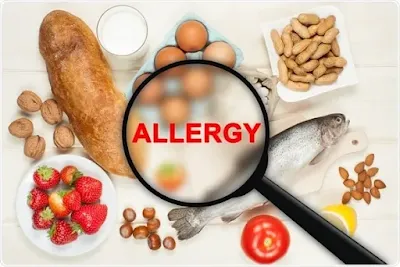Food allergies and intolerances are becoming increasingly common in today's society. While the symptoms of these conditions may appear similar, it is important to understand that they are fundamentally different. This understanding is crucial in order to accurately diagnose and effectively treat these conditions.
In this blog post, we will delve deeper into the topic of food allergies and intolerances, exploring their causes, symptoms, diagnosis, management, and prevention.
1. What is a Food Allergy?
A food allergy is an adverse immune reaction to a specific protein found in certain foods. It occurs when the body's immune system mistakenly identifies the protein as harmful and triggers an allergic response.
The symptoms of a food allergy can range from mild to severe and typically occur immediately or within two hours of consuming the allergenic food. Common symptoms include hives, itching, swelling, abdominal pain, nausea, vomiting, diarrhea, and, in severe cases, anaphylaxis, which can be life-threatening.
2. What is a Food Intolerance?
Unlike food allergies, food intolerances do not involve the immune system. Instead, they occur when the body is unable to properly digest certain foods or substances. Lactose intolerance, for instance, is a common form of food intolerance caused by the inability to digest lactose, the sugar found in dairy products. Symptoms of food intolerance often manifest over time and may vary in severity depending on the quantity of food consumed. These symptoms commonly include bloating, gas, abdominal pain, diarrhea, and nausea.
3. Common Foods That Cause Allergies:
Certain foods are more likely to trigger allergic reactions than others. The eight most common allergenic foods include peanuts, tree nuts, shellfish, fish, milk, eggs, soy, and wheat. These foods account for approximately 90 percent of all allergic reactions. Additionally, celiac disease is a common condition caused by gluten, a protein found in wheat, rye, and barley. Gluten intolerance, also known as non-celiac gluten sensitivity, is another widespread condition that occurs when the body is unable to digest gluten properly.
4. Diagnosing Food Allergies and Intolerances:
If you suspect that you have a food allergy or intolerance, it is essential to consult a qualified healthcare practitioner who specializes in allergies and immunology. They will evaluate your symptoms, medical history, and perform various diagnostic tests to determine the presence and nature of your sensitivity.
Common methods of diagnosis include skin prick tests, blood tests, and elimination diets. These tests provide valuable information to guide treatment and dietary adjustments.
5. How to Manage Food Allergies and Intolerances:
The primary approach to managing food allergies and intolerances is to avoid consuming the specific foods or substances that trigger symptoms. For individuals with food allergies, strict avoidance of allergens is vital to prevent potentially life-threatening reactions.
This may entail carefully reading food labels, being cautious of cross-contamination, and educating oneself about hidden sources of allergens. On the other hand, individuals with food intolerances may find relief by restricting or modifying their diet accordingly. For instance, individuals with lactose intolerance may need to avoid or limit their intake of milk and dairy products, or alternatively, opt for lactase supplements to aid digestion.
6. Prevention:
While complete prevention of food allergies and intolerances is not always possible, there are steps you can take to reduce your risk of developing these conditions. One key approach is adopting a healthy and varied diet that includes a diverse range of foods. Introducing new foods one at a time and observing your body's reaction can help identify potential triggers early on.
Additionally, breastfeeding infants exclusively for the first six months of life has been shown to reduce the risk of certain food allergies. It is also important to stay informed about any family history of allergies or intolerances, as these conditions can have genetic components.
Conclusion
It is important to note that while this blog post provides general information on food allergies and intolerances, it is not a substitute for professional medical advice. If you suspect that you or someone you know has a food allergy or intolerance, it is always recommended to consult with a healthcare provider for proper diagnosis and guidance.
Understanding the difference between food allergies and intolerances, recognizing common allergenic foods, seeking professional diagnosis, implementing management strategies, and focusing on prevention are all essential aspects of effectively dealing with food allergies and intolerances. By staying informed and taking appropriate measures, individuals can lead healthier lives and reduce the impact of these conditions on their overall well-being.
By identifying common allergenic foods, seeking proper professional diagnosis, and implementing strategies to manage symptoms, individuals with food allergies and intolerances can live healthier and more fulfilling lives. Remember, prevention and awareness are key in mitigating the risks associated with these conditions.
If you suspect you have a food allergy or intolerance, consult a healthcare professional to receive appropriate guidance and support on your journey towards better health.
Sources:
1. Food Allergy Research & Education. (2021). Food Allergy Facts and Statistics for the U.S. Retrieved from https://www.foodallergy.org/resources/facts-and-statistics/
2. National Institute of Allergy and Infectious Diseases. (2021). Food Allergy. Retrieved from https://www.niaid.nih.gov/diseases-conditions/food-allergy
3. National Institute of Diabetes and Digestive and Kidney Diseases. (2017). Food Allergies and Food Intolerances. Retrieved from https://www.niddk.nih.gov/health-information/digestive-diseases/food-allergies-intolerances
4. Mayo Clinic. (2021). Food Allergy. Retrieved from https://www.mayoclinic.org/diseases-conditions/food-allergy/symptoms-causes/syc-20355095
5. American College of Allergy, Asthma & Immunology. (n.d.). Food Allergy Vs. Food Intolerance. Retrieved from https://acaai.org/allergies/types/food-allergy/food-allergy-vs-food-intolerance
6. National Institute of Diabetes and Digestive and Kidney Diseases. (2018). Lactose Intolerance. Retrieved from https://www.niddk.nih.gov/health-information/digestive-diseases/lactose-intolerance

0 Comments
Post a Comment
Share your views